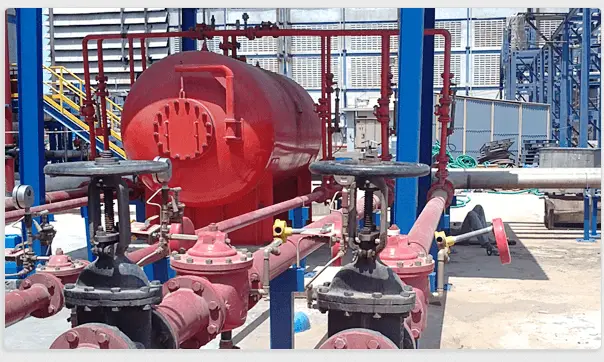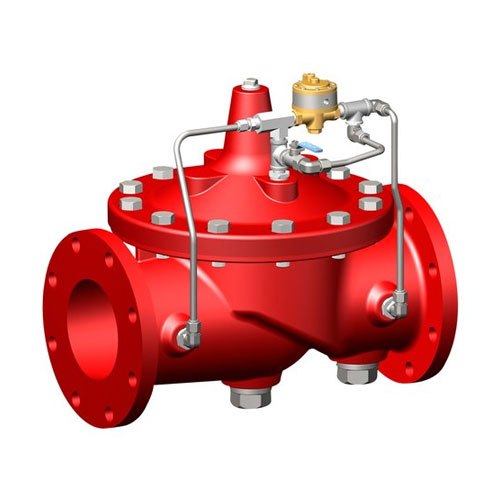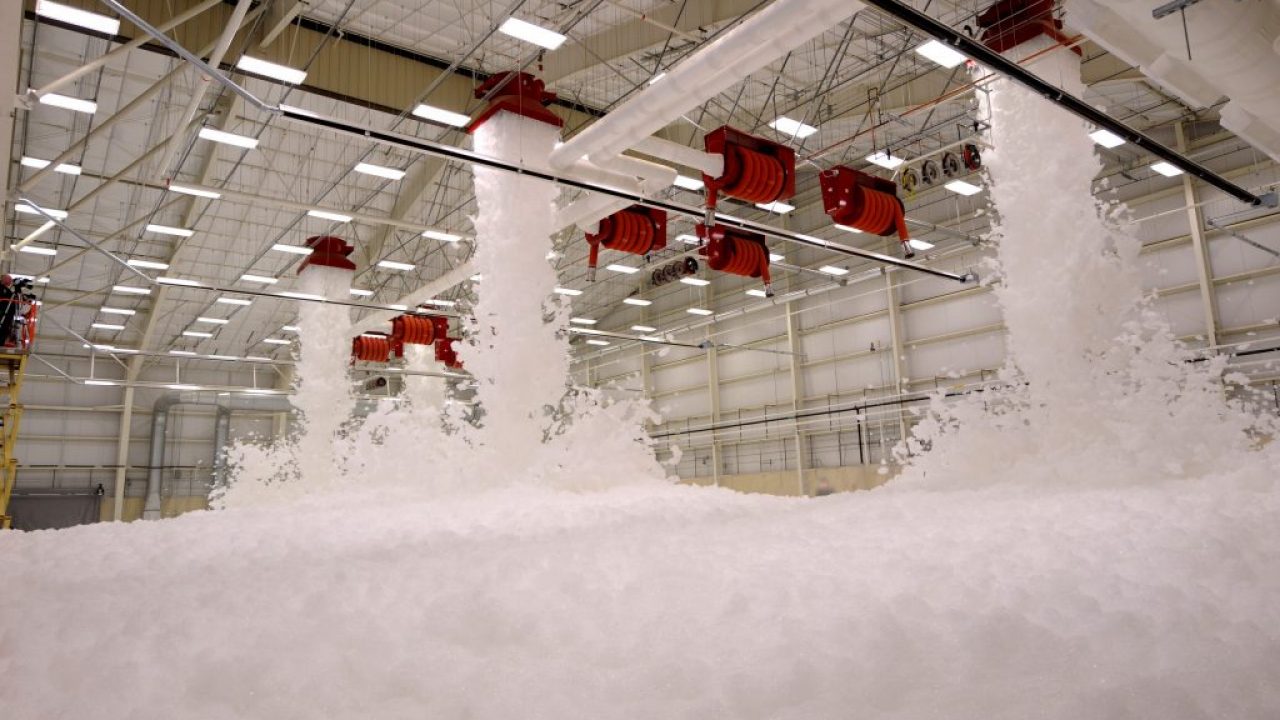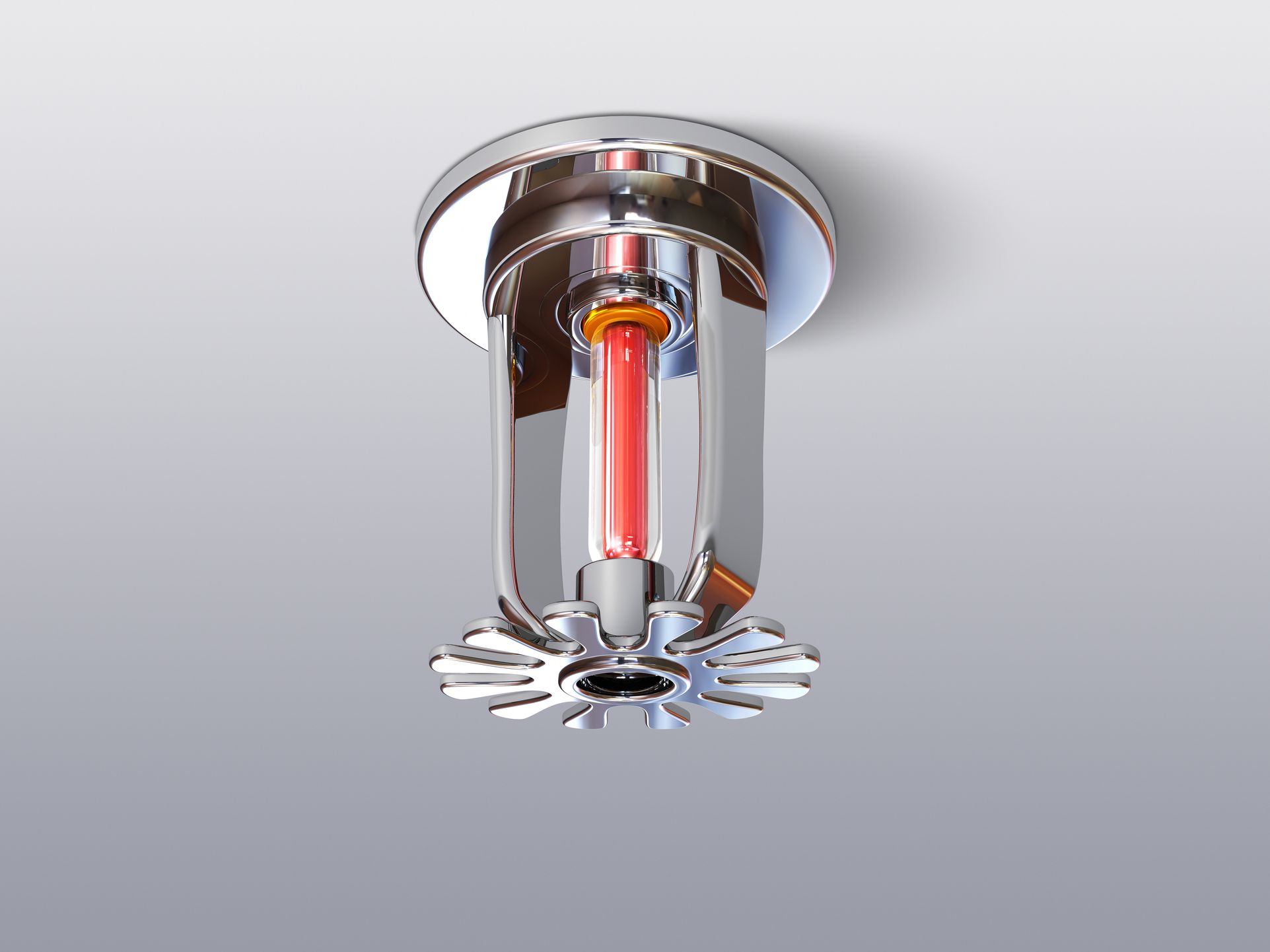Fires on Hydrocarbon are more frequent due to the volatility of the hydrocarbon and its property to not dissolve with water and lighter than water the fire extinguishing of hydrocarbon fire with water is not possible. In case of fire on Hydrocarbon if the water is sprayed, due to the light weight of the hydrocarbon it will float on the water and reignite them to fire and due to the speed of water the fire will travel from one place to other place.
Fire Protection Foam, also locally know as Foam Fire Fighting System; is a system of firefighting, where water is not used. In certain cases, water can actually cause, the spread of fire; example, electrical fire or petroleum based fires. Here, automated fire protection is critical and has to be provided, yet water should not to be used. This challenge is met by the Fire Protection Foam.
Hence in this case where plant is using hydrocarbon the same should be protected with Foam Sprinkler system designed as per NFPA 16
Foam shall be applied at a minimum density of 6.5 lpm/m2 of the exposed area of the plant.
A minimum pressure of 1.4 bars shall be achieved at the hydraulically remotes sprayer. However, pressure at the hydraulically favorable sprayer shall not exceed 3.5 bars.
The sprayers shall be installed in rows at the ceiling level above the centre of plant floor and spaced at not more than 3M.
Quartzoid Bulb Sprinklers (Q. B. S.) Detection is used to for detection of fire which will be connected to deluge valve for auto operation of the system. Q B Sprinklers shall be of 68 Deg. Or 79 Deg. C depending upon the ambient temperature of the location of the plant.
For foam concentrate (AFFF 3%) the foam tank made out of SS 304 with foam feeding inlet, foam pick up tube, and level indicator shall be provided. The foam concentrate shall be for 10 min. operation of the system.
To mix the foam concentrate in to water foam inline inductor is provided near the foam tank. The inductor of suitable capacity shall be provided downstream of the deluge valve such a way that when water will flow from the inductor it will induce foam concentrate from tank in water stream.
Operation Details of Foam System
To sustain a fire, we require three things, Fuel, Ignition or Spark and Oxygen. These three elements form the basis of fire, also referred to as the Fire Triangle. If one of the elements is missing, the fire will not exist. Fire Protection Foam System, isolates the oxygen, from the fire or fuel.
In case of fire the Quartzoid Bulb sprinkler shall burst due to heat which allow water in the detection pipe to drain out and in process allow the Deluge valve to open fully. As soon as the Deluge valve opens the water shall flow through the piping and Inline Inductor to induce foam from the foam tank in the water stream to flow water and foam solution to foam sprayer mounted on the ceiling of the plant. At foam sprinklers the foam shall be generated due to air induction and the finished foam shall be gently applied and spread on the fire.
This foam passes though the pipes, under pressure and directly on the fuel or fire, though the sprinkler. The foam covers the fuel like a blanked and isolates the Oxygen. The Fire Triangle is now, broken.
The fire shall be extinguisher since the foam layer shall blanket the fire and cut the contact with air to fire. Due to the foam application fire of hydrocarbon, oil, paints etc. shall be extinguisher completely.
The indication of operation of the system shall be available on the control panel with Alarming Siren.
Also Read: Deluge Valve Working Principle
Note: When the Foam sprinkler detects that the fire is present, it is triggered. This causes the water to flow into the bladder tank. The foam concentrate, goes into the bladder tank via the proportioner. The proportioner, maintains and keeps in check the desired; percentage of foam. The foam is formed when the foam concentrate and the water mix, in the right proportion.

Types of Class ‘B’ Foams:
Aqueous Film-Forming Foam (AFFF) : This is a high quality foam. It is popularly used in, refineries, airports and manufacturing plants. They can be used in a variety of mediums, they are hence very versatile.
High Expansion Foam : They are used in very large areas. Along with the area, they also cover a sizeable height; hence also used to provide three dimensional protection in areas like warehouses and ships. They seem to be very effective, where spillage or a hydrocarbon fire might take place.
Advantages of Foam Spray System
- Entire area is flooded with foam, hence very useful for fire fighting in hazardous area, plant, storage tanks, etc. where manual approach is difficult.
- Very quick in response.
- The fire losses is kept low as the area under fire get foam blanket and also cooling due to water contain and so chances of spreading fire is negligible.
- Complete fire extinguishing without person involvement is possible with this system.
Source: https://instrumentationtools.com/basics-foam-fire-fighting-system/






